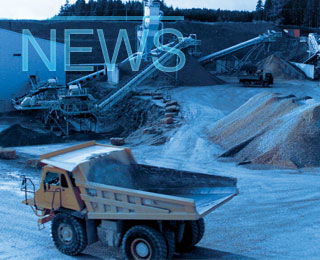With massive investments being pumped into the infrastructure space, the outlook for the Saudi cement sector looks bright. Cement companies have benefitted largely from cheap raw materials and fuel availability, making them outstandingly profitable.
However, there are some concerns on fuel supply, which could lead to cement shortages. Despite buoyant demand, the cement sector is facing difficulty in ensuring smooth supply of fuel from the government.
At the same time, the majority of cement companies are undergoing expansion plans to meet the escalating demand in the kingdom. Qassim Cement, Arabian Cement and Al-Jouf Cement have also firmed up plans to boost their capacity, but they have not been able to secure approvals from Saudi Aramco as yet.
In addition, the Saudi leadership wants three to four cement plants to be built over the next three years and has granted SAR3bn toward the scheme, according to Minister of Commerce and Industry Tawfiq Al-Rabiah.
The minister earlier this month had asked cement producers to build a strategic reserve of two months’ inventory at each plant and to cover any shortage by importing cement. This is due to the fact that the demand for cement is expected to increase by 9.4 per cent a year to over 80Mt (73Mt) by 2017, according to a new report released by market research firm, CWC Group.
Another report published recently disclosed that the cement crisis is re-emerging in the eastern region as a number of distributors are increasing prices to consumers by up to 25 per cent with a normal bag sold at SAR20 (US$5.30).
The Ministry of Commerce and Industry has issued regulations specifying the price of cement at SAR12 for the ordinary and SAR13 for the solid category. The ministry is obligating factories in the country to work at full capacity to cover the market and ensure additional supplies for the areas that need cement.
According to the vice president of the contractors committee in the eastern chamber, Khaliefa Al-Dabeeb, one of the reasons for the cement crisis is the growing demand from the mega-projects in Saudi Arabia. He added that the problem is further aggravated by the greedy intermediaries and also the willingness of factories to sell cement to any company, local or foreign, resulting in the price fluctuation.
Government spending remains the key driver for cement demand. The demand for Saudi cement is benefitting from massive investments currently under way as the country is strengthening its non-oil sector. The government has initiated plans to execute projects worth US$700bn over the next 20 years. Nearly half of the public investments are set aside for real estate and housing sectors.
With the massive demand for cement in the large government projects on the one hand and government directives to meet the deadline on the other, Custodian of the Two Holy Mosques, King Abdullah, has ordered the import of 10Mt of cement this year to end any shortage in the country.

Colombian cement market expands 14% in March
Grey cement dispatches in Colombia increased 13.7 per cent to 1.068Mt in March 2025 when compare...